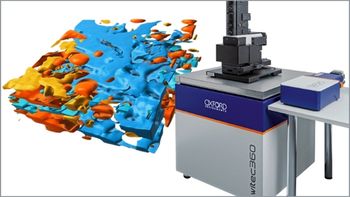
Edible Oil Testing: Handheld Raman Spectroscopy Offers Quick, Reagent-Free Answers
Researchers have developed a rapid, reagent-free method to estimate the saponification value (SV) of edible oils using handheld Raman spectroscopy. This innovative approach simplifies oil quality testing, cutting time and costs while enhancing accuracy and portability.
The quality of edible oils is crucial to both nutritional value and food safety. Conventional methods to assess parameters like the saponification value (SV)—an indicator of the average molecular weight of fatty acids in oils—are labor-intensive, requiring chemical reagents and extensive time. Now, a team of researchers led by Nandu Ajikumar and Karuvath Yoosaf has introduced a groundbreaking approach that employs Raman spectroscopy to rapidly and accurately determine SV. This method eliminates the need for chemical reagents and offers a portable, efficient alternative to traditional techniques (1,2).
Details and Findings
The study, conducted by researchers from the Centre for Sustainable Energy Technologies (C-SET) at CSIR-NIIST and the Department of Applied Chemistry at Cochin University of Science and Technology (CUSAT), showcases the potential of handheld Raman devices for edible oil analysis. The findings, published in Food Chemistry, detail how Raman spectroscopy, combined with partial least squares (PLS) regression, can precisely predict SV in oil mixtures (1).
Raman spectroscopy, known for its non-destructive and label-free detection capabilities, measures the Raman scattering of light from a sample to identify molecular vibrations and composition (1,2). The researchers hypothesized that the SV of oils could be inferred from their Raman spectra, as these spectral patterns are known to correlate with the fatty acid composition. Two model systems—coconut-gingelly oil and coconut-sunflower oil—were tested (1).
Initial univariate calibration models worked for individual oil systems but were inconsistent across the two systems. To address this, the team implemented PLS regression, a multivariate technique that builds predictive models by analyzing variance across spectral data. The final model demonstrated remarkable accuracy, with an coefficient of determination (R2) of 0.999, and an average SV prediction error of just 2.1 and a root mean square error of 2.4. SV values are expressed in units of mg KOH/g oil (or fat) (1).
Advantages of the New Method
This Raman spectroscopy-based approach offers multiple advantages over conventional titration methods (1,2):
- Speed and Efficiency—Traditional SV determination takes up to an hour, while the Raman-based method requires mere minutes.
- Reagent-Free—Unlike titrimetric methods, this process eliminates the need for chemical reagents, reducing both cost and environmental impact.
- Portability—The handheld Raman device allows for field testing, making it ideal for industrial and market environments.
- Minimal Sample Preparation—Samples can be analyzed directly without elaborate preparation, ensuring ease of use.
Technical Innovations
To refine the accuracy of their predictions, the researchers utilized advanced preprocessing techniques to address noise and baseline drift in Raman spectra. Their LabVIEW-based Savitzky-Golay coupled advanced rolling circle filter (SCARF) algorithm effectively removed fluorescence interference, ensuring cleaner data for analysis (1).
The study also highlighted the potential for integrating this method into automated systems for simultaneous SV and iodine value (IV) estimations. By leveraging the same spectral dataset, users could gain comprehensive oil quality insights in a fraction of the time traditionally required (1).
Implications
Oil adulteration is a pervasive issue, often leading to economic and health risks. Current laboratory-based methods, though accurate, are impractical for large-scale or on-site testing. This Raman-based technique offers a viable solution for routine analysis, empowering food safety authorities and industry stakeholders to combat adulteration effectively (1,2).
The innovation builds on prior research into spectroscopic techniques for oil analysis, including Fourier transform-infrared (FT-IR) and terahertz (THz) spectroscopy. However, these spectroscopic methods often require more costly equipment and technical expertise. In contrast, the handheld Raman device stands out for its simplicity, accessibility, and potential for mass deployment (1,2).
This work represents an advancement in food safety technology. By leveraging handheld Raman spectroscopy, the authors have created a method that is not only fast and cost-effective but also environmentally friendly. This approach could improve quality assurance in the edible oil industry, offering a robust tool against adulteration while ensuring consumer safety. By integrating science with practical application, this study potentially paves the way for a safer, more transparent edible oil market.
References
(1) Ajikumar, N.; Emmanuel, N.; Abraham, B.; John, A.; Pulparamban, A.; Unni, K. N.; Yoosaf, K. Quick and Reagent-Free Monitoring of Edible Oil Saponification Values Using a Handheld Raman Device. Food Chem. 2025, 464, 141580. DOI:
(2) Ozen, B.; Çavdaroğlu, Ç.; Tokatli, F. Trends in Authentication of Edible Oils Using Vibrational Spectroscopic Techniques. Anal. Methods 2024, 16, 4216–4233. DOI:
Newsletter
Get essential updates on the latest spectroscopy technologies, regulatory standards, and best practices—subscribe today to Spectroscopy.





